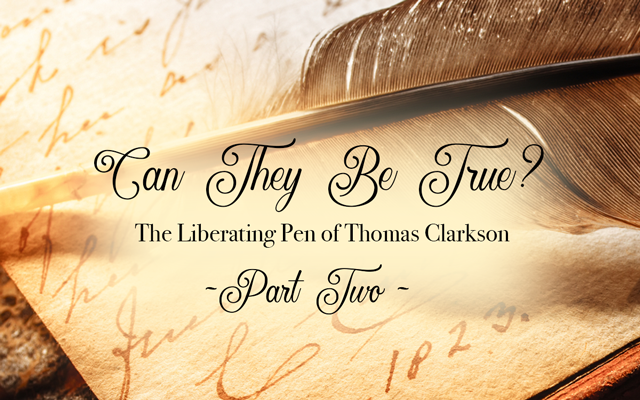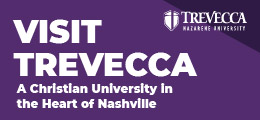Can They Be True? – The Liberating Pen of Thomas Clarkson – Part Two


First rose up the images of their capture. A wail bore his imagination to the African tropics and the hut of a young, slender woman. Day four of seeking her children had come to an end, and the full realization that the slave hunters had stolen them from her forever overwhelmed her with cries of grief. In another village, several faces peered out of hiding, with quaking fear at the desecration of their once quiet community. The slavers had raided it, murdering the old and weak and capturing the healthy and young, leaving only those who had managed to escape their clutches through flight.
Now flooded all Thomas knew of their voyage – the leg of the slave ship triangle, known as the notorious Middle Passage. Herded like cattle into tiny pens, the Africans were crammed into the dank, diseased-infested hulls of ships. In the dark drafts of the ship’s belly, there was no relief for their torment, as they often occupied only enough space to lay down. Chains stole all remnant of comfort, both from their bodies and souls. But above all this was the malice of their captors. More slaves died during the voyage than at any other time. Many more wished to die rather than live to see an unknown destination, where language barriers kept them ignorant of why they had been captured and where they were going.
Now, finally, came the end and yet, in a real sense, the beginning of their lives of misery when the ships finally ended their circlet of woe. Now relatives that had been captured together were separated and sold, never to see the familiar face again. Now they were humiliated to serve those whom no law, natural or divine, bound them to bow beneath. Now the grueling days of labor in the West Indies sugarcane plantations began, the labor so intense that few lived longer than nine years. Now began the generational cycle of servitude to hardened masters, raising children to whom their parents could bequeath nothing but the same cycle of misery and degradation.
Thomas shuddered. As the images faded, like phantoms into the quiet heather and buzz of the summer afternoon, the cries echoed in his soul. If these things were true, someone must stop them. Realization, like dawn, broke on the young man. Someone, someone must stop the slave trade.
Thomas Clarkson became a ferocious champion of the African slaves. Leaving his previous plans to enter the ministry, he translated his winning essay into English and published it. By the age of 26, he was riding the English roads to Britain’s slave trading meccas, such as Liverpool and Bristol, collecting evidence for Parliament. More than once, his life was threatened by this attempt, but his research would not be in vain. In 1792, it was presented by the likes of William Wilberforce before the governing members of the greatest empire of the time. His labors would not be rewarded until 20 years later, when the bill abolishing the slave trade in Great Britain was finally passed. Clarkson would record this monumental accomplishment in his invaluable work, The Rise and Progress of the Abolition of the British Slave Trade, making him one of the greatest pens to both inspire and record an epoch of human liberty.
Source: The Rise and Progress of the Abolition of the British Slave Trade by Thomas Clarkson
Kenzi Knapp is a follower of Christ, homeschool graduate and student of history. A fourth generation Missourian she enjoys writing about daily life enrolled in Gods great course of faith and His story throughout the ages at her blog, Honey Rock Hills.
























































